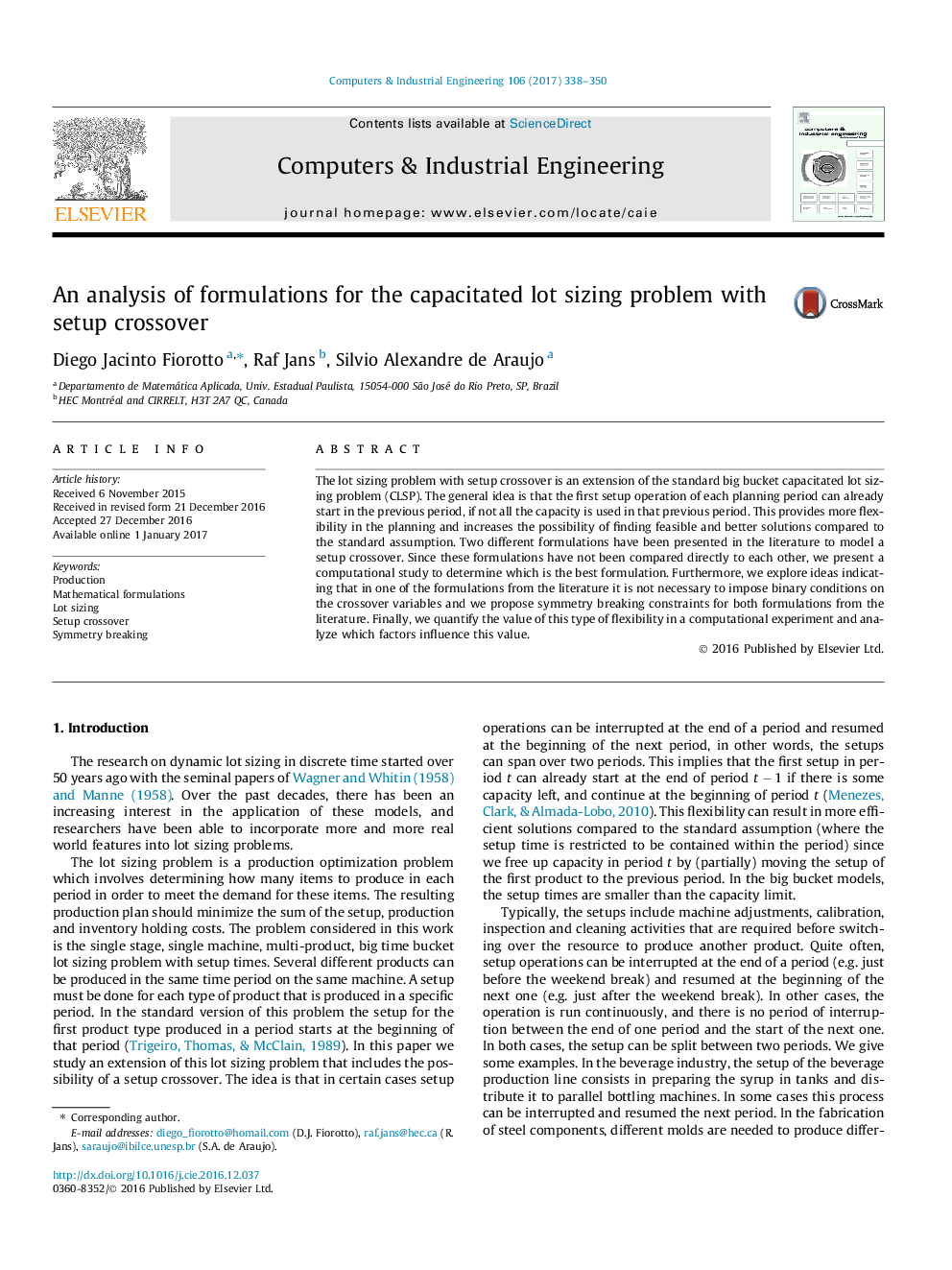| کد مقاله | کد نشریه | سال انتشار | مقاله انگلیسی | نسخه تمام متن |
|---|---|---|---|---|
| 5127786 | 1489060 | 2017 | 13 صفحه PDF | دانلود رایگان |
- The lot sizing problem with capacity constraints and setup crossover was studied.
- We compare the two formulations proposed in the literature.
- We propose new constraints to break the symmetry in the formulations from the literature.
- We analyze the impact of the proposed adaptations of the formulations.
- We analyze the factors that have an impact on the benefits of allowing a setup crossover.
The lot sizing problem with setup crossover is an extension of the standard big bucket capacitated lot sizing problem (CLSP). The general idea is that the first setup operation of each planning period can already start in the previous period, if not all the capacity is used in that previous period. This provides more flexibility in the planning and increases the possibility of finding feasible and better solutions compared to the standard assumption. Two different formulations have been presented in the literature to model a setup crossover. Since these formulations have not been compared directly to each other, we present a computational study to determine which is the best formulation. Furthermore, we explore ideas indicating that in one of the formulations from the literature it is not necessary to impose binary conditions on the crossover variables and we propose symmetry breaking constraints for both formulations from the literature. Finally, we quantify the value of this type of flexibility in a computational experiment and analyze which factors influence this value.
Journal: Computers & Industrial Engineering - Volume 106, April 2017, Pages 338-350
